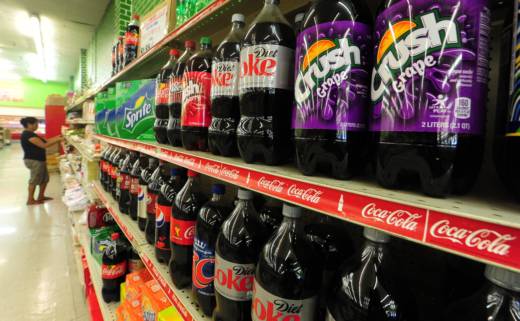That’s a different approach from a sales tax, which is applied at the cash register, adds no cost to the manufacturer, and may not affect a consumer’s decision-making; revenue from excise taxes can also be used to fund a community’s programs of choice. But soda taxes can be controversial, and are not always ultimately successful, as was the case with 2017 soda tax in Cook County, Illinois, which was implemented, but quickly repealed. And they face stiff opposition from beverage and grocery trade associations, which point to a lack of results to date as reason to end soda taxes.
“It’s unreasonable to expect obesity rates to go down as a result of a sugar tax alone,” says Marlene Schwartz, director of the Rudd Center for Food Policy and Obesity at the University of Connecticut, pointing out that tobacco taxes didn’t result in an immediate decline in lung cancer rates. “That’s why we go after other things at the same time,” like getting rid of soda machines in high schools, subsidizing healthy food, and setting nutritional guidelines for the national school lunch program. “Every piece is important,” she says.
“It’s important to monitor taxes that have already gone into effect,” to learn how to make innovations in designing them in the future, says Donald Marron, director of economic policy issues at the Urban Institute, a nonpartisan think tank in Washington, D.C. “The first round of research papers looks at what happened to prices. Not stunningly, prices went up. The second round looks at whether people change their behavior. Also not surprising to me as a card-carrying economist, yes, people respond to prices. The third round, which is much harder to track: Does it change health problems?”
The dearth of data on diabetes and obesity rates surrounding declining soda consumption has fueled pushback from the Big Soda, which claims that changing consumption is not enough to impact disease. UC Berkeley public health researcher Kristine Madsen says, “That’s the most ridiculous, and false, argument I’ve ever heard.”
Madsen worked on the first study about the impact of Berkeley’s soda tax, which went into effect in March 2015. “We’re looking at a big mass of population, 40 percent of whom don’t drink soda at all, some of whom aren’t suffering from obesity or diabetes, to see whether the whole population trends down,” she says. “That means there could be a 10-year horizon before we see a difference.”
Data is starting to come in from the communities that have enacted them. Berkeley, for example, showed a 9.6 percent drop in sugary drink sales one year after its tax was enacted in March 2015. In Philadelphia, sales of sodas and other sugary drinks dropped 57 percent in the six months after its tax law went into effect in January 2017.
And local campaigns have also influenced public understanding of the issues surrounding soda taxes. “Soda is such a focal product, so that’s where the conversation has started, and there’s a logic to that,” says Marron.
Part of what’s made some local soda taxes successful has been a comparatively streamlined message: Sugar, especially the sugar in sodas, is bad; therefore, let’s reduce soda consumption. Another key to their success has been the hyper-locality of goals. Berkeley’s goal was to improve health. Philadelphia’s was to raise funds for pre-K and parks.
“Where these policies are successful, they come from the community,” says Schwartz. As an example, she points to former New York City Mayor Michael Bloomberg’s 2012 attempt to put a cap on the portion sizes of sodas and other sugary beverages. It tanked—in part, she claims, because Bloomberg failed to first find out what New Yorkers themselves wanted. “For these types of policies to be successful, they have to come from the community,” she says.
Whether they win or lose, local efforts help shed light on potential difficulties in enacting a federal tax. “You have to know your audience,” says Schwartz, and messaging is certainly easier to a population of 121,000 (Berkeley) or 1.6 million (Philadelphia) than it is to entire U.S. population of 323 million. They also illuminate challenges in passing excise taxes on junk food at any level of government—despite reports of consumption decreases from countries like Hungary, which in 2011 passed legislation for a tax on sugar, salt, and the ingredients in energy drinks.
Across the U.S., healthy food remains expensive and unhealthy food relatively inexpensive. “We’re trying to correct this trend,” says Schwartz. Within that context, “It does seem appropriate for the federal government to make food safe, and to expand the idea of safety to giving people they healthy food they need.”
Pomerantz says she isn’t sure Americans are ready for a shift to junk food taxes, but says, “I think it’s the future.”
